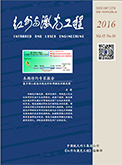 View fulltext
View fulltext
On the basis of analyzing the characteristics of low light level (LLL) image and ultra-violet image and the information amount of dual channel color night vision system, the LLL and ultra-violet color night vision technique is put forward. The methods of gray-scale modulation, frequency field fusion,special component fusion are tried, and the improved LLL and ultra-violet image pseudo color fusion algorithms are presented. These new algorithms include subsection gray-scale modulation, image difference picking-up, component separation based on the reflected characteristics to night skylight reflection characteristics of objects and color space mapping which embodies the spectrum response of image sensor and nature vision. Some good results are obtained.
At present, many researchers pay more attention to the thermal-effect of the high energy laser at home and abroad. A few technologies have been demonstrated, such as the water-cooling, the thermoelectric cooler, the phase-change cooling and so on. All of the technologies are induced to minimize the thermal deformation and damage of resonator mirrors and windows in high energy laser. The technologies are compared, the multilayer mirror is disscussed emphatically. The engineering experience verifies this method can meet the requirement of the high power laser system on very small mirror surface deformation. It is very important method for reducing heating effect of the high power laser.
A 1 064 nm Mie Doppler wind lidar system based on the double edge technique is described. The Fabry-Perot(FP) etalon is used as the frequency discriminator, which analyzes the Doppler frequency shift from the atmospheric aerosol movement by wind. The system frequency measurement is calibrated by the known line-of-sight (LOS) Doppler shift produced by a rotating disk, and the calibration accuracy in velocity is less than 1% in the range of ±40 m/s. The continuous field wind profiles in eight days are carried out from Apr. 23, 2006.










